 The 13th episode of ABC’s science fiction anthology series, Tales Of Tomorrow, airs on ABC, with each episode’s opening titles proclaiming that the series is produced “in cooperation with the Science-Fiction League of America”, a collective of sci-fi writers including Isaac Asimov and Theodore Sturgeon among its members. This episode stars Zachary Scott and Barbara Joyce.
The 13th episode of ABC’s science fiction anthology series, Tales Of Tomorrow, airs on ABC, with each episode’s opening titles proclaiming that the series is produced “in cooperation with the Science-Fiction League of America”, a collective of sci-fi writers including Isaac Asimov and Theodore Sturgeon among its members. This episode stars Zachary Scott and Barbara Joyce.
This series is not yet chronicled in the LogBook. You could join theLogBook team and write this guide or support the webmaster’s efforts to expand the site.

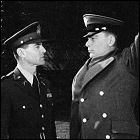 The tenth episode of the military anthology series West Point is broadcast on CBS in the United States. This episode is an early TV script written by future Star Trek creator Gene Roddenberry, one of the series’ staff writers.
The tenth episode of the military anthology series West Point is broadcast on CBS in the United States. This episode is an early TV script written by future Star Trek creator Gene Roddenberry, one of the series’ staff writers. 
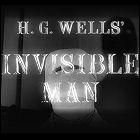 The 13th episode of H.G. Wells’ The Invisible Man, based on Wells’ story, airs on ITV; the series will be shown later in the U.S. on CBS. Lisa Daniely and Deborah Watling (Doctor Who) star; Patrick Troughton (Doctor Who) guest stars in the first season finale.
The 13th episode of H.G. Wells’ The Invisible Man, based on Wells’ story, airs on ITV; the series will be shown later in the U.S. on CBS. Lisa Daniely and Deborah Watling (Doctor Who) star; Patrick Troughton (Doctor Who) guest stars in the first season finale.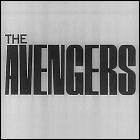 British broadcaster ABC airs the 63rd episode of the spy-fi series The Avengers, starring Patrick Macnee and Honor Blackman.
British broadcaster ABC airs the 63rd episode of the spy-fi series The Avengers, starring Patrick Macnee and Honor Blackman.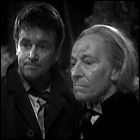 The third episode of Doctor Who airs on the BBC. The Forest Of Fear is part three of
The third episode of Doctor Who airs on the BBC. The Forest Of Fear is part three of 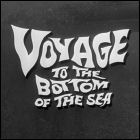 The 13th episode of Irwin Allen’s adventure series Voyage To The Bottom Of The Sea airs on ABC, starring Richard Basehart and David Hedison. Werner Klemperer (Hogan’s Heroes) guest stars.
The 13th episode of Irwin Allen’s adventure series Voyage To The Bottom Of The Sea airs on ABC, starring Richard Basehart and David Hedison. Werner Klemperer (Hogan’s Heroes) guest stars.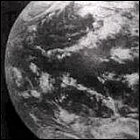 NASA launches Aplications Technology Satellite-1, the first of a new series of experimental satellites with a goal of combining the functions of existing weather and communication satellites, with other technology demonstrations added on. ATS-1 transmits the first-ever view of the entire face of Earth visible from geosynchronous orbit, as well as testing some of the first satellite navigation technology. ATS-1’s position in orbit also proves ideal for the North-America-to-Australia link during 1967’s global Our World broadcast. ATS-1 remains in serice for almost exactly 12 years.
NASA launches Aplications Technology Satellite-1, the first of a new series of experimental satellites with a goal of combining the functions of existing weather and communication satellites, with other technology demonstrations added on. ATS-1 transmits the first-ever view of the entire face of Earth visible from geosynchronous orbit, as well as testing some of the first satellite navigation technology. ATS-1’s position in orbit also proves ideal for the North-America-to-Australia link during 1967’s global Our World broadcast. ATS-1 remains in serice for almost exactly 12 years.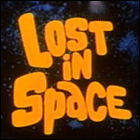 The 41st episode of Irwin Allen’s science fiction series Lost In Space premieres on CBS, starring Guy Williams, June Lockhart, and Jonathan Harris.
The 41st episode of Irwin Allen’s science fiction series Lost In Space premieres on CBS, starring Guy Williams, June Lockhart, and Jonathan Harris.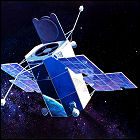 NASA launches the second Orbiting Astronomical Observatory satellite, given the nickname “Stargazer” after it successfully enters service. OAO-2 will remain in service for over four years, making significant contributions to the scientific understanding of comets and supernovae. Two separate experiments, including one designed and overseen by Dr. Fred Whipple, observe the sky in ultraviolet light from Earth orbit.
NASA launches the second Orbiting Astronomical Observatory satellite, given the nickname “Stargazer” after it successfully enters service. OAO-2 will remain in service for over four years, making significant contributions to the scientific understanding of comets and supernovae. Two separate experiments, including one designed and overseen by Dr. Fred Whipple, observe the sky in ultraviolet light from Earth orbit.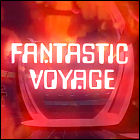 ABC broadcasts the 13th episode of the Filmation animated series Fantastic Voyage, based on the
ABC broadcasts the 13th episode of the Filmation animated series Fantastic Voyage, based on the 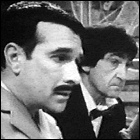 The
The  ABC airs the 38th episode of Irwin Allen’s sci-fi series Land Of The Giants, starring Gary Conway, Don Matheson, Deanna Lund, and Don Marshall. Warren Stevens guest stars.
ABC airs the 38th episode of Irwin Allen’s sci-fi series Land Of The Giants, starring Gary Conway, Don Matheson, Deanna Lund, and Don Marshall. Warren Stevens guest stars. ITV airs the 11th episode of the mystery/spy-fi series Strange Report in the U.K., starring Anthony Quayle, Kaz Garas, and Anneke Wills (Doctor Who). (The series is an international co-production and airs in the United States on NBC.)
ITV airs the 11th episode of the mystery/spy-fi series Strange Report in the U.K., starring Anthony Quayle, Kaz Garas, and Anneke Wills (Doctor Who). (The series is an international co-production and airs in the United States on NBC.)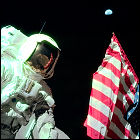 The final manned lunar landing mission lifts off atop a Saturn V rocket. Apollo 17 is the first mission to include a qualified geologist, Harrison Schmitt, in its crew; Gene Cernan and Schmitt descend to the surface aboard the lunar lander Challenger, where the last two men to walk on the moon spend a total of 22 hours exploring the Taurus-Littrow valley. For the third mission in a row, a lunar rover is stowed into one side of the lander. Astronaut Ron Evans orbits overhead in the command/service module America. The astronauts return on December 19th, bringing home nearly 250 pounds of lunar soil and rock samples.
The final manned lunar landing mission lifts off atop a Saturn V rocket. Apollo 17 is the first mission to include a qualified geologist, Harrison Schmitt, in its crew; Gene Cernan and Schmitt descend to the surface aboard the lunar lander Challenger, where the last two men to walk on the moon spend a total of 22 hours exploring the Taurus-Littrow valley. For the third mission in a row, a lunar rover is stowed into one side of the lander. Astronaut Ron Evans orbits overhead in the command/service module America. The astronauts return on December 19th, bringing home nearly 250 pounds of lunar soil and rock samples.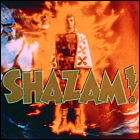 The 14th episode of Filmation’s live-action Shazam! series airs on CBS, starring Jackson Bostwick, Michael Gray and Les Tremayne.
The 14th episode of Filmation’s live-action Shazam! series airs on CBS, starring Jackson Bostwick, Michael Gray and Les Tremayne.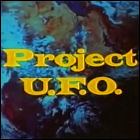 The 21st episode of Harold Jack Bloom’s sci-fi series Project UFO airs on NBC, portraying fictionalized investigations into what the show claims are actual cases from the U.S. Air Force’s Project Blue Book investigations. Edward Winter and Caskey Swaim star. Dr. Joyce Brothers guest stars.
The 21st episode of Harold Jack Bloom’s sci-fi series Project UFO airs on NBC, portraying fictionalized investigations into what the show claims are actual cases from the U.S. Air Force’s Project Blue Book investigations. Edward Winter and Caskey Swaim star. Dr. Joyce Brothers guest stars.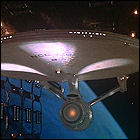 After a tortured development history dating back to aborted early 1970s attempts to relaunch Star Trek on the big screen, Paramount premieres the much-anticipated (and much hyped)
After a tortured development history dating back to aborted early 1970s attempts to relaunch Star Trek on the big screen, Paramount premieres the much-anticipated (and much hyped) 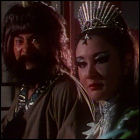 The
The 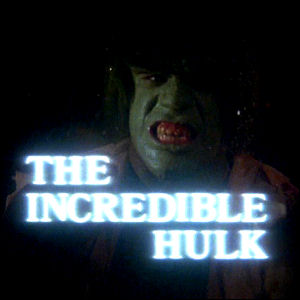 The 44th episode of the live-action series based on Marvel’s comic The Incredible Hulk airs on CBS, starring Bill Bixby, Jack Colvin, and Lou Ferrigno. Bradford Dillman guest stars.
The 44th episode of the live-action series based on Marvel’s comic The Incredible Hulk airs on CBS, starring Bill Bixby, Jack Colvin, and Lou Ferrigno. Bradford Dillman guest stars.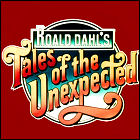 ITV airs the 32nd episode of the anthology series Tales Of The Unexpected. Denholm Elliott guest stars.
ITV airs the 32nd episode of the anthology series Tales Of The Unexpected. Denholm Elliott guest stars.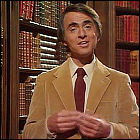 The 11th episode of Carl Sagan’s groundbreaking science documentary series Cosmos premieres on PBS. A popular history of science and scientific theory vs. tradition and superstition, segueing into Sagan’s field of expertise (astrophysics), Cosmos is a major milestone in American documentary filmmaking and the popularization of science and the scientific method (and makes an instant celebrity out of Sagan).
The 11th episode of Carl Sagan’s groundbreaking science documentary series Cosmos premieres on PBS. A popular history of science and scientific theory vs. tradition and superstition, segueing into Sagan’s field of expertise (astrophysics), Cosmos is a major milestone in American documentary filmmaking and the popularization of science and the scientific method (and makes an instant celebrity out of Sagan).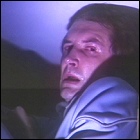 BBC1 premieres the
BBC1 premieres the 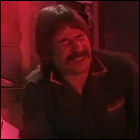 ITV premieres the
ITV premieres the 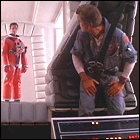 The big-screen sequel
The big-screen sequel  The
The 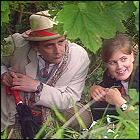 The
The 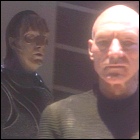 The week-long national syndication window opens for
The week-long national syndication window opens for 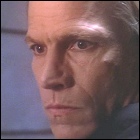 The week-long national syndication window opens for
The week-long national syndication window opens for 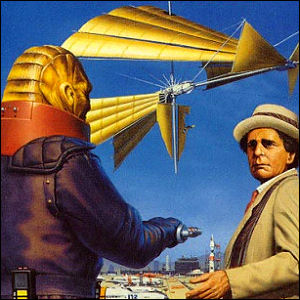 Virgin Publishing releases the
Virgin Publishing releases the